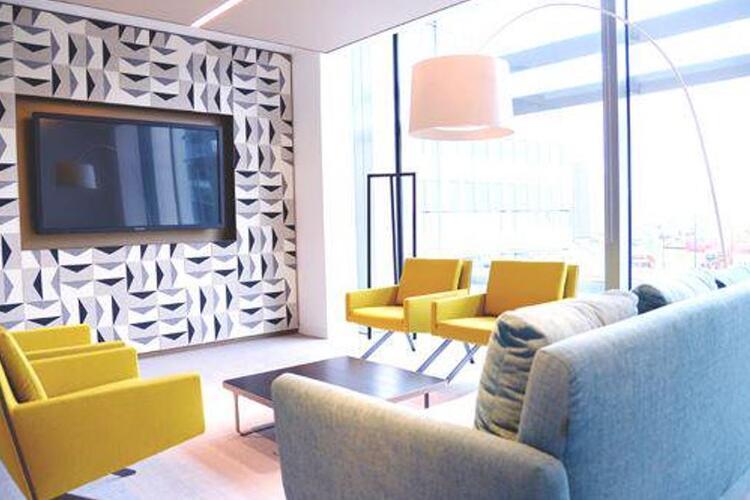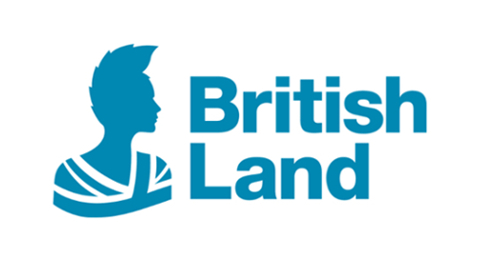Wellbeing and Productivity at British Land’s Head Office
22 July 2016Wellbeing and Productivity at British Land’s Head Office
22 July 2016The refurbishment of British Land’s Head Office presented an exciting opportunity for the company to test measures designed to enhance people’s wellbeing and productivity through placemaking. The results show that staff in the new offices now feel happier, healthier and more productive. So, British Land is rolling out the tested measures elsewhere, from increasing natural light, views out and greenery, to encouraging active living and social interaction.
Key Facts
- 99% of staff find the new space an enjoyable work environment, up from 69%
- Wellbeing innovations tested for wider use across the portfolio
- New framework tested for measuring wellbeing and productivity
Situation
British Land is one of the UK’s leading property firms, with a vision to create Places People Prefer. In 2015, the company embarked on a radical programme to promote wellbeing and productivity across its portfolio. As a placemaker, British Land can help people feel happier and healthier by creating wonderful public realms, pleasant walkways, good local links, access to nature and opportunities for social interaction.
The refurbishment of its Head Office provided the ideal opportunity for British Land to introduce wellbeing innovations and evaluate whether these did indeed foster a happier, more productive workforce. In doing so, British Land applied the World Green Building Council framework for measuring health, wellbeing and productivity in offices that it had helped develop.
Actions
British Land partnered with the Monomoy Company to measure three data sets, before and after the refurbishment:
- Perception: Over 190 people completed a survey on their perceptions of the office space, around 80% of staff. In addition to providing compelling evidence for the impact of the refurbishment on people’s sense of wellbeing and productivity, responses increased design focus on areas such as lighting, facilities and air quality.
- Physical: 18 sensors positioned around the offices monitored environmental conditions that affect people’s comfort and wellbeing, including humidity, lighting, noise, pressure, temperature and Volatile Organic Compounds (VOCs). This data was relayed to a central database every 15 minutes.
- Financial: British Land collected organisational data to explore the potential financial impact of the office environment, including staff turnover, medical costs and days lost to sickness. They also collected staff complaints relating to building aspects such as temperature and lighting.
Design partner MoreySmith’s plans for the space were wholeheartedly based on wellbeing principles and informed by the findings of the pre-refurbishment studies. Mace acted as main contractor and Como as project manager.
Wellbeing measures included:
- Daylight: Opening up spaces to increase natural light e.g. introducing internal windows and a central stairwell and using materials that refract and reflect light, such as white furniture.
- Active design: A new central stairwell creates new routes, and refreshments and printers are carefully positioned to encourage staff to leave their desks. Improved showers, changing rooms and bike storage facilities also support active lifestyles.
- Sensory stimulation: Fabrics, flooring, furniture and finishes provide different colours, heights, textures, shapes and sounds. Artworks are regularly rotated around the offices.
- Social spaces: Informal seating, an enhanced reception area and a mix of meeting rooms, as well as ‘The Landing’, a large open area for all-staff events.
- Personal choice: New task-based spaces give greater flexibility and choice about working styles, including shared tables, comfortable sofas, hot desks, adjustable sit-stand desks and small rooms.
- Green infrastructure: 800 plants designed to make people feel better, as well as contributing to air quality.
Additional sustainability measures included:
- Every lightbulb and new appliance is energy efficient.
- All new taps designed to use as little water as possible.
- No refurbishment waste went to landfill, with more than 900 items of office furniture reused and recycled.
- All timber sustainably sourced, as certified by the Forest Stewardship Council (FSC).
- Recycled materials used for ceiling tiles, flooring and timber.
- 3 apprentices worked on the project, developing their skills.
- Around a third of expenditure stayed within the M25.
- Project team volunteered to fix up community association Flamboyan’s dilapidated workshop in Maida Vale.
- 41/50 Considerate Constructors Scheme score, achieving 8/10 or better in every category.
Benefits
- 99% of staff find the new office space an enjoyable environment to work in, up from 69%
- 99% believe it’s positive for corporate image, up from 50%
- 95% see a positive impact on workplace culture, up from 55%
- 88% feel it enables them to work productively, up from 67%
- 88% say it supports their wellbeing, up from 56%
- Staff are happier with environmental conditions affecting comfort, including lighting, noise and air quality, with sensor data showing improvements across the board.
- Absenteeism is down and productivity levels are up, which can bring financial benefits, although it is still too early for exact figures and British Land continues to review organisational data.
For more: http://views.britishland.com/2015/12/a-world-of-wellbeing-at-our-fingertips/
Challenges and Achievements
WELLBEING
How to define wellbeing?
Wellbeing can cover many different things. For British Land, the focus is on emotional and physiological factors that can be directly influenced by the physical environment. It’s about providing the right conditions for people’s health and happiness to flourish, and then determining how to measure and improve this further. Placemakers cannot influence every aspect of people’s wellbeing, but they can provide the foundation for people’s wellbeing to flourish. This study helped British Land improve its understanding of how it can influence health, wellbeing and productivity through placemaking.
TECHNOLOGY
How to get accurate data for environmental conditions?
Low-cost, portable monitors for real-time environmental data related to health and wellbeing are an emerging technology. British Land used CubeSensors that yielded important information, but also presented some issues. For instance, sensors that were plugged in recorded high temperatures, freestanding sensors required regular recharging and sensors that were too far from the base station failed to record data. There was also no platform to compare data across time and location. British Land held weekly meetings with the team to review results and address issues with the monitors. The team continues to monitor new technologies coming to market, especially those with historical data capabilities and more user-friendly formats. It is likely that future generations of smart phone will introduce environmental data monitoring.
ORGANISATIONAL
How to bring together data sets from different areas of the business?
British Land needed to bring together data sets traditionally considered within separate business areas. For instance, human resources for data such as staff turnover, medical costs and absences, facilities managers for data on temperatures, lighting and air quality, and asset managers for surveys of occupier satisfaction with the building. Encouraging these different business areas to look at all three data sets together required a change in approach. For British Land, this built on the good data and reporting framework that the company had already established through its sustainability strategy.
Find out more
Matthew Webster
Head of Wellbeing and Futureproofing
British Land
www.britishland.com
*Please note that the information on this page was supplied by the BBP Member and the BBP assumes no responsibility or liability for any errors or omissions in the content

